We’ve all been in ... the meeting. The one in which your team is supposed to come up with a slew of kick-ass new ideas to add fresh brand appeal, expand your portfolio of offerings, and fuel business growth.
It can also be an exercise in frustration, where the conflicting personalities and priorities of each of your innovation team players all come to a head – where Kevin’s rigid planning kills any hope of originality; where Yvonne wants opinions from everyone under the sun; and where Ernie bemoans how your most groundbreaking proposals will inevitably be whittled down to an uninspiring iteration of what you’ve always done before.
You scratch your head, knowing that everyone needs to come together to create ideas that can win acceptance from stakeholders, get championed through the development process, and make it into the marketplace. But if your team’s dynamics are constantly at odds, how can you hope to come up with truly innovative ideas, let alone bring them across the finish line?
We need to rethink how we build innovation teams
To get that heightened level of creative thought and unified support from your team, you first have to explore how you architect teams. This starts by understanding the distinction between a role and a functional archetype.
A role is what a person does – it’s the behavior assumed based on a particular situation. You hire for the role of a chief R&D officer, a product manager, a UX/CX designer, or a business analyst.
In contrast, a functional archetype is an innate pattern of behavior – who that person is and how that person naturally operates in the world regardless of the specific situation. Distinct team member archetypes are why we say, “Let’s get Jenny, she’s a natural people person” or “Where’s Chris? … He’ll know how to map this all out.” It speaks to how they’ll perform at a task rather than what set of tasks they’ll be expected to perform.
Here’s why this distinction matters
When hiring for an open position, you probably go through the standard drill: Pull out the job description, update the roles and responsibilities, and post it. You’re looking for people who can fill a role … deliver a task-driven behavior in a particular situation.
But focusing team-building decisions solely on what people will do is a big contributor to the problems inherent with organizational silos. You have people filling their specific roles and tactical functions, but they struggle when expected to reach across the aisle and push their ideas forward. Everybody becomes so glued to the priorities of their role and their requisite behaviors that they inadvertently create roadblocks for everyone else. And unless you operate as a company of one, you’ll continue to struggle to get those team partners to stick with your journey towards progress.
Let’s compare that to a team that’s constructed around balancing personal archetypes instead.
Innovation, idealized
Plato once said that your archetype describes “your ideal self.” When people embrace who they really are, that’s when they function at their best. Archetypes are the secret forces behind all human behavior. They dwell in our unconscious and influence our every move – much of the time without our awareness of them. So, for example, if you’re a natural people person, that talent is something you’ll apply to every role you play throughout your career.
This gives us an opportunity to rethink how we look at the Kevins, Yvonnes, and Ernies who attend “the meeting.” Can it be that the thing we dread the most about working with them is actually our strongest business asset?
Yes, it is. And it’s also the key to creating the highly aligned, collaborative, and productive teams that we need to bring our innovation ideas to life.
Meet the Citizen Innovators
A Citizen Innovator can be anyone – at any level of an organization – who plays an active role in the process of creating, sharing, and executing innovative, reliable, and consistent ideas in pursuit of a specific objective.
In the struggle to balance the art of ideation with the science of development and the work of execution, citizen innovators are the ones who can build a bridge to greater creativity, process efficiency, and team success. And when their abilities are properly applied and nurtured, they hold the power to change the very way you think of innovation – from enterprise-wide concerns like product development and business modeling to the larger cultural trends that shape the resulting products and services you provide to customers.
Not every Citizen Innovator looks or operates the same, and that’s really the point. Each has their own ideal self (as Plato calls it) and brings a unique set of personal strengths and talents to the work they do – I call it their natural genius.
Yet, those skill sets do tend to fall into one of the six archetypical categories outlined below – which are inspired by researcher models of team archetypes, combined with my own in-depth study and experience as a team leader. When balanced properly, you’ll architect a whole-brain team – one that’s ideally suited to breaking through the barriers to innovation and cross-team collaboration rather than constantly bumping up against them.
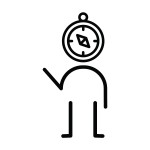
1. Strategist
Natural genius: Planning and executing
Innate strengths: As the name implies, this archetype loves to create the strategy and get things done. They have an eye for priorities and how to execute so they can show results. Delivering value is at the heart of the strategist’s innate purpose. They know and understand the bigger business blueprint and are adept at shepherding work through the process and out the door. When it comes to innovation, they can “see around the corner” and intuitively know the steps to get things done.
Where they need balance: They like to have concrete plans and be able to measure and report progress. But sometimes strategists get so caught up in executing the big picture that they lose sight of how to bring others along for the ride. That’s when they need to look for a culture shaper to help tell the story of change so it’s understandable and acceptable to others.

2. Culture Shaper
Natural genius: Communicating change
Innate strengths: This innovator is someone who architects the brand and oversees how it’s being expressed. With culture shapers comes the rise of the storytellers – the people who create a compelling story arc over a long time and then infuse it into the narrative of the organization. They use it to activate and inspire trust, participation, and courage among their fellow team members.
Where they need balance: Culture shapers are savvy at helping those around them realize that maintaining the status quo is a bigger threat than the risks of doing something unfamiliar and untested. However, the culture shapers can get so caught up in nailing the execution that they may lose sight of the most important element – people. When that happens, they need to partner with a psychologist to bring empathy into the equation.

3. Psychologist
Natural genius: Fostering empathy
Innate strengths: By smashing the traditional perspective of a highly rational approach to solving problems, the psychologists understand unstructured innovation. They explore perceptions of an idea from every direction. This is where empathy in business comes into play: understanding what it’s like to be the customer of this idea.
Where they need balance: Psychologists understand the evolving role of trust in all business relationships, whether it’s among colleagues or between the business and its customers. But there are times when they can get too hung up on how ideas make people feel or get mired in politics. That’s when they need an orchestrator to come to their rescue.
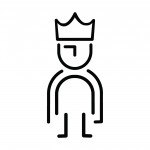
4. Orchestrator
Natural genius: Leading fearlessly
Innate strengths: Orchestrators naturally choreograph processes and keep things humming. They know how to keep all the parts and pieces in sync and get things done. Orchestrators advocate for the experience of the customer. They think about how to establish relationships earlier in the process, with both internal teams and external customers and partners.
Where they need balance: This archetype knows how to maneuver the political steppingstones in every corner of the business. However, their fearless leadership can, at times, give them a reputation as being a lone wolf, which can make programs feel more like piecemeal projects. To address this, they need to look for a collaborator to help them integrate all the parts and pieces.
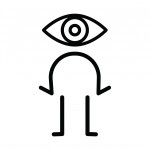
5. Collaborator
Natural genius: Integration
Innate strengths: Ideas can never go anywhere by themselves. Creativity and innovation rely on partnerships and socialization. Collaborators love to get involved with some or all of the process, help improve ideas, and then champion them. They understand how to capture the attention of people from other groups to excavate blind spots and nurture relationships. This helps them create powerful ideas and increases the chances of success.
Where they need balance: Collaborators care less about getting personal credit and more about building bonds; so, their ideas have a greater chance of finding success. But their focus on bringing everyone together can mean that ideas get flat over time. That’s where their partnership with provocateurs proves invaluable.
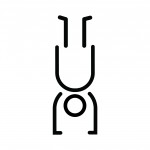
6. Provocateurs
Natural genius: Challenging the status quo
Innate strengths: These nonconformist thinkers question long-held assumptions and generate highly original ideas. As creative disrupters, they lead the way in coming up with new ideas to create transformation within all areas of the business.
Where they need balance: Their unconventional approaches to problem-solving can rub other players the wrong way. And though their ability to push past the obvious makes them sustainable and prolific idea generators, their natural talents can fall short in execution, which is why they need strong partnerships with strategists.
When strengths are at odds, the work suffers
What we see when we start to look at these different archetypes of innovators is that they impact how each integrates with the other team members they work with – including how they will likely perceive feedback and suggestions, as well as how they may perceive the value of their contribution in relation to that input.
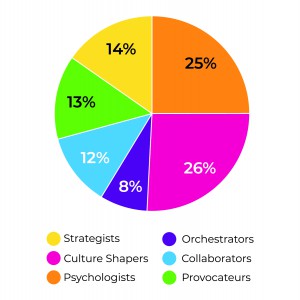 A cumulative view of team archetype assessments to date.
A cumulative view of team archetype assessments to date.For example, in looking at the chart above, based on responses from thousands of people worldwide who’ve assessed the archetypes of their team members, you’ll see an interesting story unfolding:
More than half (51%) of respondents identify as either culture shapers or psychologists, which makes sense in the highly customer-focused world of business innovation. Strategists are also an easily recognized function, and we give credit to the envelope-pushing provocateurs.
While those involved in innovation may say they are equipped to drive change and transform their business, the chart above shows otherwise. The natural collaborators – those who innately know how to reach across silos and integrate with IT, finance, HR, and so forth – are in short supply. However, the biggest dearth of natural talent shows up with orchestrators – the people willing to have the difficult conversations that are necessary for teams to move innovation forward. Avoiding these talks doesn’t keep the peace, it holds teams back, hurts the credibility of innovation, and keeps teams from realizing their highest potential.
How leadership can architect a well-balanced, whole-brain team
You may be sweating bullets about now, wondering if you’re going to have to hand out a bevy of pink slips so you can get your dream team in place. Relax, it’s much easier than that.
First, determine your own innovation archetype by taking this quick assessment I’ve developed. Understanding how you work and bring new ideas to the table will give you context for how you’ll be interacting with those on your team, as well as across your organization.
Next, have your team members take the assessment. This will enable you to audit the makeup of your current team and get a better understanding of where – and why – conflicts are likely occurring. For example, if your group is heavily weighted toward psychologists and collaborators, you’ll have insights on why everyone likes each other but might struggle to come up with ridiculously exciting ideas or manage the barriers to executing them.
The exercise shows you where you need to shore up your team. This could be with input from people in other parts of your company who have the archetypes you lack or through new hires.
If you’re looking to bring greater innovation to your organization, you have to begin by reverse-engineering it to the individual level. Then, look at how you build your teams outside of job titles and department names. Becoming a more cohesive, innovative team doesn’t have to be overwhelming. One degree of change in your perspective on new ideas and contributes to them can make a 180-degree change in the quality and efficiency of your output.
The shift from focusing solely on roles to taking a broader view of archetypes will help you quickly develop greater alignment across your team. And alignment is how you turn ordinary teams into extraordinary ones.
Editor’s note: This is an updated conversation, drawn from an article that originally published in CCO Magazine in January 2020.
About the author
 Carla Johnson is a world-renowned storyteller, an entertaining speaker, and a prolific author. Having lived, worked, and studied on five continents, she's partnered with top brands and conferences to train thousands of people how to rethink the work that they do and the impact they can have. Her visionary expertise has inspired and equipped leaders at all levels to embrace change, welcome new ideas, and transform their business. Her new book, RE:Think Innovation, will be available on June 29. Follow Carla on Twitter at @CarlaJohnson.
Carla Johnson is a world-renowned storyteller, an entertaining speaker, and a prolific author. Having lived, worked, and studied on five continents, she's partnered with top brands and conferences to train thousands of people how to rethink the work that they do and the impact they can have. Her visionary expertise has inspired and equipped leaders at all levels to embrace change, welcome new ideas, and transform their business. Her new book, RE:Think Innovation, will be available on June 29. Follow Carla on Twitter at @CarlaJohnson.
